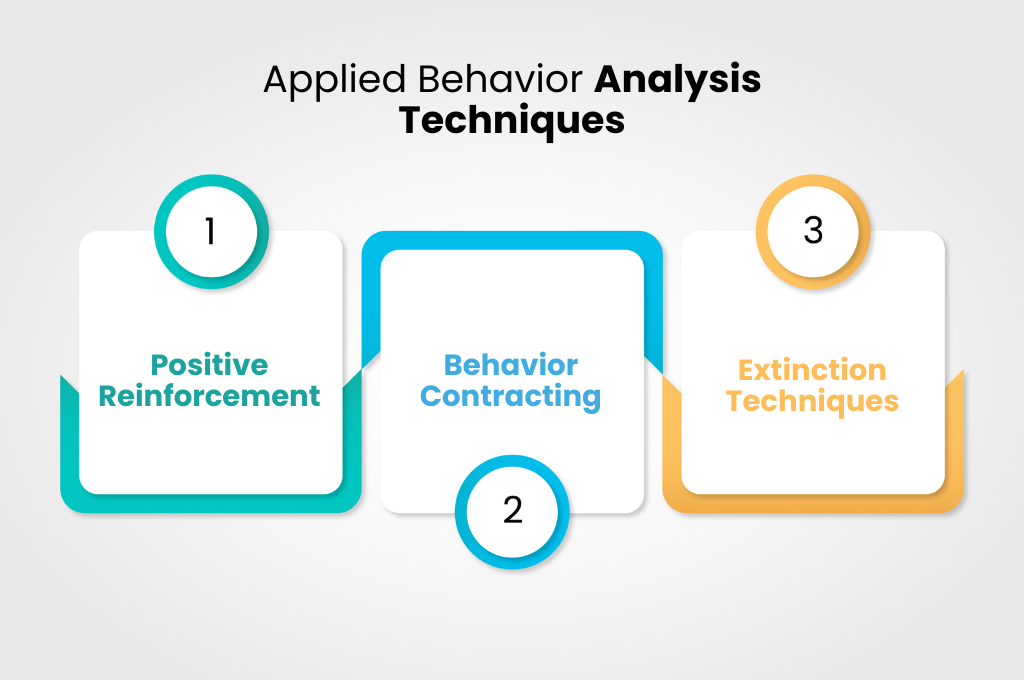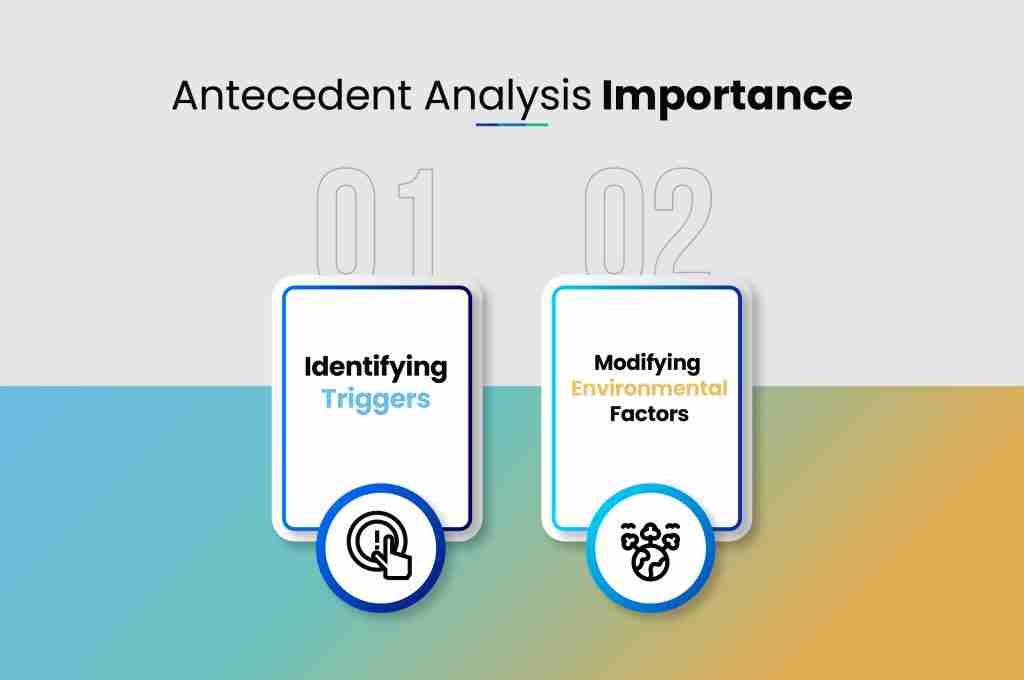Strength in Unity: ABAs Crisis Intervention Strategies for Families
ABA TherapyJuly 17, 2025

Crisis Management in ABA Therapy
In Applied Behavior Analysis (ABA) therapy, knowing how to handle a crisis is a big deal for families and folks with autism who might be going through tough times. By having a game plan and figuring out what pushes someone's buttons, parents, caregivers, and teachers can set up a safer space for everyone involved and deal with crises like pros.
Proactive Strategies in Crisis Prevention
Having a plan and doing your homework on what sets someone off are huge in stopping crises before they kick off in ABA therapy. By spotting what might send someone spiraling, caregivers can step in early, chill things out, and keep those with autism feeling good and safe. Getting ready for anything is about keeping everyone safe by spotting possible troublemakers early and creating calm vibes.
Checking out what happens before a blowup is about seeing common patterns and knowing what might make someone act out. By getting this insight, caregivers can tweak the environment and add some chill strategies to cut down on crisis chances.
Crisis Triggers for Individuals with Autism
For folks with autism, a crisis might happen because of too much sensory input, not being able to say what they need, changes in their routine, or feeling really strong emotions. These things can show up as meltdowns, aggressive behaviors, or even trying to make a run for it. It's super important for parents, caregivers, and teachers to spot these triggers and have a strategy ready to handle crises when they pop up.
Knowing the hurdles people with autism jump through daily can help predict and ease crisis triggers. Addressing sensory overload, difficulties in talking, and emotional ups and downs, caregivers can create a place where the individuals with autism feel good and safe. Keep up with ways to manage a crisis and be ready to team up for better interventions when things get tough.
Applied Behavior Analysis Techniques

When things go sideways in ABA therapy, having crisis intervention strategies ready is like having a trusty sidekick. Applied Behavior Analysis (ABA) gives families tools to handle hiccups and make strides for folks with autism. Let's spotlight three top-notch tricks: positive reinforcement, behavior contracts, and extinction techniques.
Positive Reinforcement
Positive reinforcement is all about giving props when someone nails it. A simple way to keep the good vibes rolling by rewarding someone each time they hit the mark—that's the secret sauce. Encouragement this way nudges folks to stick with behaviors that make everyone happy, paving the way for lasting change. And because everybody’s different, this strategy can be spun to suit the person, making it a go-to in sticky situations.
Behavior Contracting
Imagine behavior contracting as a game plan for crisis moments. It's a nifty method to champion the good stuff and tackle the tricky stuff head-on. By setting up clear ground rules with behavior contracts, folks with autism get a clear path for action. This approach provides a game board filled with pointers for what’s awesome and what’s not, creating a consistent playbook for handling crises.
Extinction Techniques
When it comes down to dialing it down, extinction techniques take the stage. The idea here is to stop giving attention to unwanted behaviors, so they eventually fizzle out. By showing that certain antics don't hit the desired jackpot, individuals start charting a new course. When extinction is part of the mix, it helps turn down the volume on tricky behaviors, making the space a bit more chill.
These ABA tricks—positive reinforcement, behavior contracts, and extinction—are solid pillars in the playbook for ABA therapy crisis navigation. Applying these methods with care gives parents, caregivers, and pros a better shot at steering through crises, shaping supportive surroundings, and helping individuals with autism blossom, even when the going gets tough.
De-escalation Techniques
Debunking the puzzle of ABA therapy, knowing how to cool things down is invaluable when supporting individuals through tough times, especially kids with autism. Here, we're talking about de-escalation tricks—ways to keep things chill when stuff gets hairy and bring some peace into the mix.
Keeping It Cool During Chaos
When things heat up, staying calm is the secret sauce for helping folks, like those on the autism spectrum, get through the rough patches. Total Care ABA really drives home how staying chill during rough spots sets the scene for a stable and calming environment. By keeping cool and collected, those caring for kids and professionals alike can help put the brakes on the tension and bring balance back to the moment.
In a crisis, keeping those emotions in check and being a steady presence can be like an anchor for those riding the waves of anxiety or stress. By being the calm in the storm, caregivers can steer through crises, curb rising tensions, and keep the space safe. A calm approach builds trust and security, letting people know they've got support during the storm.
Spreading the Peace
The magic of tranquility is a game changer when defusing tense situations and bringing some calm when things seem chaotic. Using warm words, gentle vibes, and a peaceful presence, caregivers offer a helping hand to those feeling off-balance, finding a bit of calm in the whirlwind. Creating a chill vibe and using simple relaxation techniques, like deep breathing or sensory tools, can help folks unwind even when the world feels overwhelming.
Helping someone find peace means seeing their emotions, speaking comfort, and offering soothing support. By meeting the person where they are emotionally, with genuine compassion, caregivers can help settle storms and guide towards a calm state of mind. Using these tranquility tidbits doesn’t just smooth the moment, it builds an environment where emotional strength and well-being thrive.
Blending these cool-as-a-cucumber strategies and peace-spreading techniques into crisis response tools equips caregivers and pros to handle tough situations more effectively in ABA therapy. Focusing on emotional balance, calm composure, and peace helps kids with autism get the all-important support they need to manage these storms, self-soothe better, and boost their overall well-being in therapy.
Safety Protocols in Crisis Management

When it comes to ABA therapy, being ready for emergencies is key to making sure everyone stays safe, especially those with autism. By keeping safety steps in mind, caregivers and therapists have an easier time handling unexpected situations and making the therapy space a place where everyone can grow.
Keeping Your Ducks in a Row
One big part of crisis intervention is being prepared, which boils down to knowing what could go wrong and having a game plan ready. This way, if things get a little tense, everyone knows their role and can spring into action without hesitation. Caregivers who plan ahead can tackle tricky behaviors head-on, making sure that individuals with autism and those around them remain as safe as possible.
Being prepared means recognizing what might trigger a crisis, developing a tailored response for each individual, and ensuring that everyone involved is trained in these specific plans. Running practice drills is also an excellent way to ensure readiness and keep everyone's skills sharp. It’s important to keep learning and adapt those crisis plans frequently, adjusting them every now and then depending on how the needs evolve for those with autism.
Locking Down Safe Spaces
A stable, organized environment is crucial in crisis management within ABA therapy. Spaces that are safe and structured provide much-needed stability for someone with autism, especially when things get a bit hairy. By setting clear boundaries, keeping the place tidy to avoid accidents, and making sure that emergency exits are plain as day, a safe environment is created.
On top of that, visual aids such as schedules or timers, along with tools to calm the nerves, can be a big help in guiding individuals with autism through their therapy surroundings, smoothing out the rough edges. A sensory-friendly setup with thoughtful touches like adjusted lighting and sound levels can add an extra layer of comfort and safety for those in therapy.
When caregivers and therapists are focused on being ready and keeping spaces safe, it helps to make ABA therapy more successful, building a nurturing and safe haven that supports both well-being and progress. Proactive actions and staunch commitment to safety measures can help contain crisis scenarios better, paving the way for positive experiences and outcomes for everyone in the therapy setting.
Antecedent Analysis Importance

In ABA therapy and handling crises, understanding what kicks off problem behaviors is a big deal. Think of it as nipping things in the bud before they get outta hand. By spotting what sets kids on the spectrum off and tweaking the world around them a bit, caregivers can help keep everyone on an even keel.
Identifying Triggers
Spotting what sets off a crisis is a big win in ABA therapy. If you can figure out what bugs a kid—whether it's too much noise, having a hard time communicating, things going off-schedule, or just big emotions—then you're halfway to fixing it. Families and folks working on the front lines can team up to hash out a plan that suits each kid down to their socks. By getting everyone on the same page, they're ready for action before things blow up.
Getting into the why and wherefores of these recognizable warning signs is like having a secret weapon. It arms caregivers of autistic kiddos with the tools to steer clear of blow-ups. This way, not only does it help calm the storm, but it also builds a safe and steady environment, making life a bit easier for everyone involved.
Modifying Environmental Factors
ABA therapy takes a good hard look at what’s happening just before things go sideways. By catching onto these patterns, those caring for the kiddos can tweak surroundings to dial down stress and sidestep crises.
Antecedent strategies are all about crafting a smooth setup that dials down outbursts and encourages good vibes. This means changing up the environment a bit—think rearranging the space, fine-tuning routines, and managing what's going on in the surroundings to make everything less of a head scratcher. By weaving these changes into everyday life, the aim is to make everything flow a tad better for everyone involved, especially the kids.
Zeroing in on these pre-behavior cues and understanding how the environment plays a role, ABA therapy proves that being ahead of the game is a smart move for avoiding a showdown. With everyone working together—caregivers, behavior experts, and teachers—they can put plans in play that make life calmer and a whole lot more supportive for kids with autism.
Collaborative Approaches for Crisis Intervention
Tackling a crisis for folks on the autism spectrum is kinda like putting together a jigsaw puzzle without the box; you need all the pieces, each bringing their own shape and color. It's not just about having a team—it's about the right team working in sync. That's what keeps everything running smoothly, making sure everyone's safe and sound, especially during the stormy times.
Teamwork in Crisis Scenarios
You know what they say: "Many hands make light work," and nowhere is this truer than when dealing with crisis situations involving autism. It's a real mixed bag of experts—behavior analysts, therapists, teachers, healthcare folks—they're all chipping in. They're like a superhero squad, each with their own skills and powers, jumping in to cover all bases that autism lays out on the table. It's not just about what each of them knows, but how they put their heads together to build plans that actually make a difference and help people live better lives.
Plus, there's the whole back-and-forth between these professionals and the families. Think of it as a tag team for the long haul, keeping everyone on track and moving forward. This constant dialogue helps create a nurturing environment where kids with autism can truly thrive, and parents don't feel they're going it alone.
Coordinated Crisis Care
Now, when the going gets tough, you want a plan that's ready to roll. In comes the crisis intervention squad—like the calvary in a Western. They’re stationed at places like Mental Health Centers, ready to spring into action for mental health hiccups, emergencies, or when Mother Nature decides to throw a fit. Their gig is all about side-by-side work with the local authorities to keep things under control and make sure everyone gets the help they need fast.
Then you have the nurses—they're the real MVPs in these situations. Think of them as the sentinels, keeping an eye on things, stepping in with the right tools to soothe the situation, and making sure the team knows the ins and outs of what's happening. When everybody's talking and it's going smoothly, it's like a well-oiled machine, and that's exactly what's needed to make sure everything is shipshape.
When these varied minds come together, they're forming a safety net, handcrafting responses that speak to the heart of both the disorder and the person. At the end of the day, it’s all about building a protective cocoon, making sure that during life's hiccups, individuals with autism and their families come through stronger and more connected than ever.
Read More About: Socially Significant Behaviors
